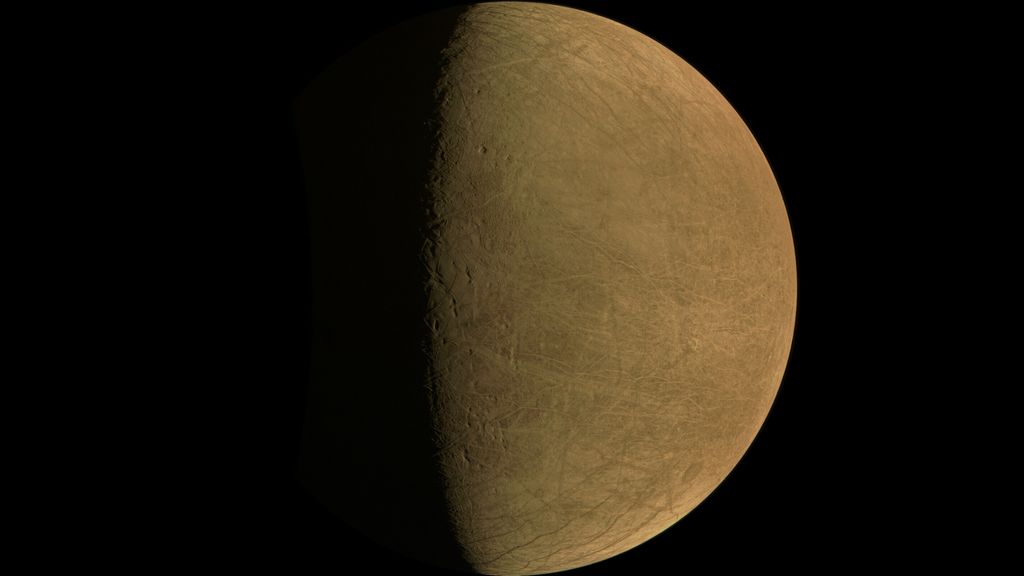
Nasa
ONS News•
The last time a spacecraft flew past Jupiter’s moon Europa, less than 500 kilometers away, was 22 years ago. NASA’s Juno probe also passed the moon, which is covered in a thick layer of ice that harbors oceans where even life could exist.
Juno approached the surface of the ice world within 362 kilometers. The razor-sharp photos taken by the spacecraft during the flyby show an erratic pattern of ridges and valleys. Large boulders of ice casting shadows on the surface and a pit that could be an impact crater are also visible.
-
Nasa
Close-up of Jupiter’s moon Europa, taken during the September 29 flyby -
Nasa
Close-up of Jupiter’s moon Europa, taken during the September 29 flyby
The data transmitted by Juno is important for preparing a new NASA mission specifically focused on this moon of Jupiter. The Europa Clipper must in two years explore the ultra-thin atmosphere, the surface and especially the interior of the moon.
The European Space Agency is also preparing a mission, the Jupiter Icy Moons Explorer (JUICE), which will also search for signs of life and map the thickness of the ice sheet.
Water and oxygen
Europe has long fascinated planetaries. The celestial body is roughly the same size as our own moon, but has a very different geological history. The presence of water and oxygen under the ice makes the Moon one of the most promising places in the solar system for life as we know it on Earth.
Scientists processing the Juno data will primarily examine the new photos to see if the moon’s surface has changed over the past two decades. The kilometer-thick crust of ice is constantly ravaged by Jupiter’s enormous gravitational pull, which also causes tides in the subterranean ocean.
 DodoFinance Breaking News Made For You!
DodoFinance Breaking News Made For You!


